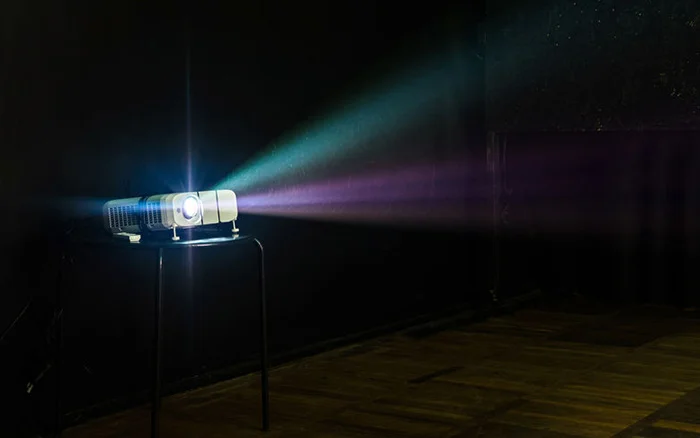
How do you differ between the three?
What goes into each technology
Have you ever pondered the functioning of an LCD projector?
How does the white light that the bulb emits effectively morph into an image?
Through this article, Lumina Screens will show you if LCD, 3LCD, or Laser projector is right for you.
Do read on to find out how an LCD projector works in the background
A dip before LCD
The projector before LCD used the technology of passing extremely bright light from an LCD to a lens. The lens manages to hugely magnify the image and projects it on screen.
But LCD is way advanced. LCD (Liquid Crystal Display) is also known as LCLV (liquid crystal light valve)
But you still don’t know if LCD, 3LCD, or Laser projector is right for you? Stick with us!
3LCD, what’s different from just LCD?
3LCD, an upcoming technology in the market devised just a few years ago. 3LCD provides a better image quality than conventional LCDs. The technology used in this device is up-to-date and the latest when it comes to commercial usage.
How 3LCD works
Individual LCDs are used for the red, green, and blue components in 3LCD projections.
A prism is used to blend the light out of each LCD in forming the final image.
The virtue of a 3LCD projector over a conventional LCD projector is that it has three chips, lacks any moving mechanical systems in the light engine, and produces full-time colour as a result of its design.
However, with 3LCD projectors, the light goes through 3 distinct chips with 3 different colour mixes to make the final image, giving it a more vibrant and clear image quality. Conventional LCD projections come with just one chip, and the light flows through that single chip which forms the image.
A final image is created from more than 2.2 million pixels in 1080p 3LCD projectors.
In the comparison between LCD, 3LCD, or Laser projectors, the 3LCD technology offers several advantages.
In general, 3LCD projectors emit brighter light than conventional DLP projectors.
Furthermore, LCD projectors often emit colours that are more brilliant and saturated than DLPs.
A small percentage of viewers may become disturbed by the “rainbow effect” of DLP projectors because 3LCD projectors do not provide the image via an optical illusion.
So let’s head to the last part of LCD, 3LCD, or Laser projector
Laser Projectors, sound straight out of a Sci-Fi?
There is also laser projection, which is predicted to eclipse conventional projection techniques in the near future.
A moving display is produced on a screen using a laser projection by shifting laser beams.
An RGB (red, green, and blue) full-colour laser projector has three pulsed laser sources or one source for projection of a single colour.
It delivers projected pictures that might be brighter and have more vibrant colours.
Laser projections have the advantages of being quick, stable, and consistent with a high repetition rate.
For both 2D and 3D, it is carefully tuned.
For large-scale, intricate projections, the multi-projection technology used in laser projection is particularly adept at maintaining picture quality.
Conclusion
So now, you are equipped with all the knowledge you need to differentiate between LCD, 3LCD, or Laser projector. But, what about the screens? They might just be a piece of silver, oops, pearlescent cloth, but they are the canvas where you can visualise the director’s art.
That’s where Lumina Screens come into the picture. They work with RGB laser projectors.
RGB boosters for Lumina Screens improve image quality and provide the greatest visual quality.
Choose Lumina Screens and enjoy your movies and series in an immersive experience.
- Date - October 24, 2019